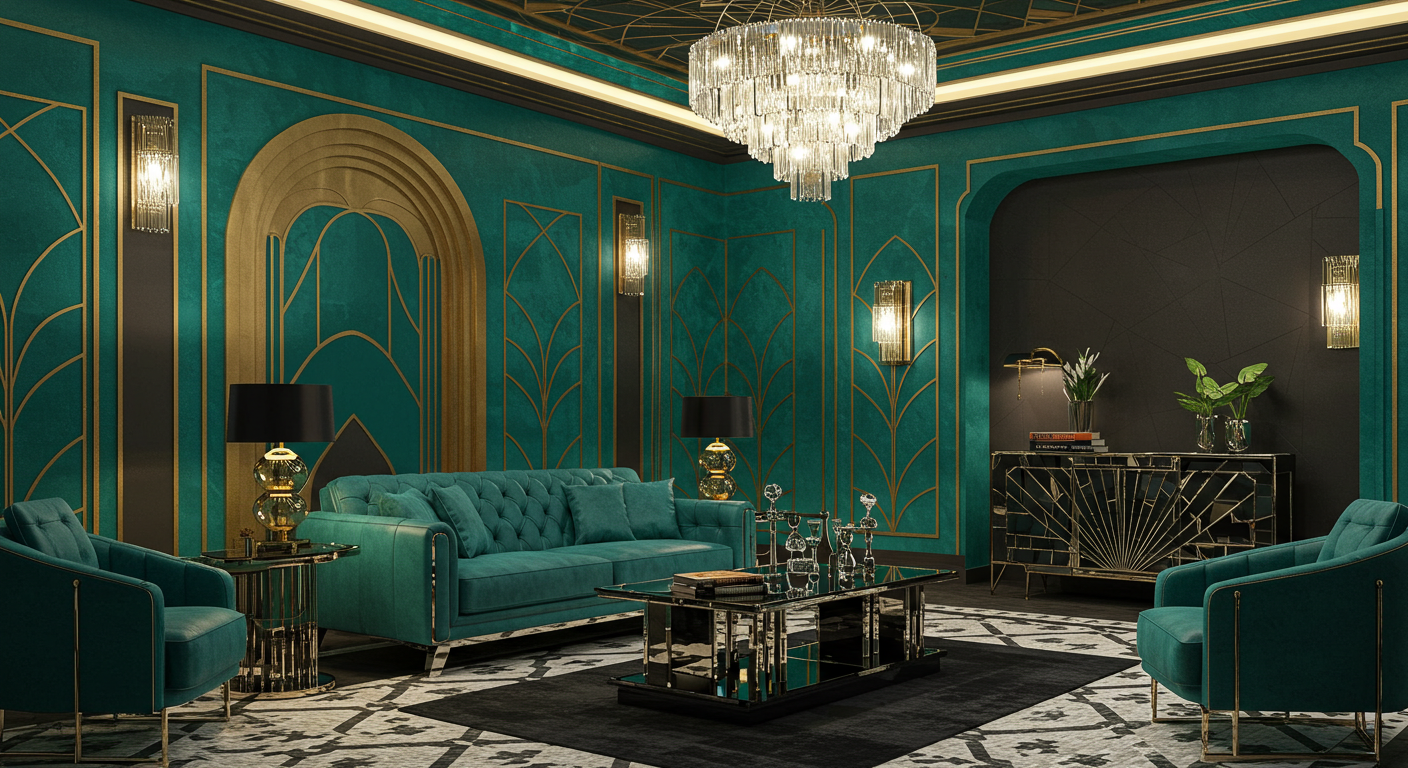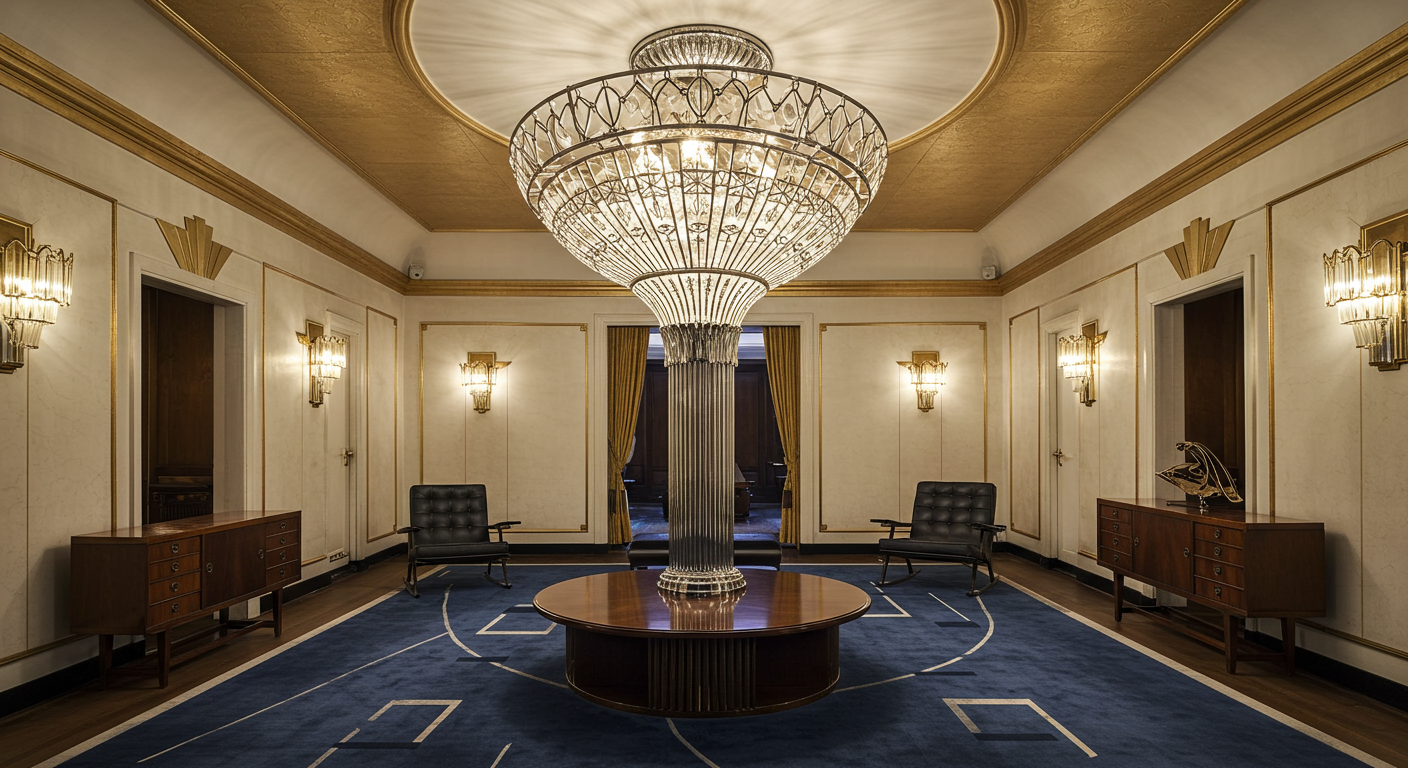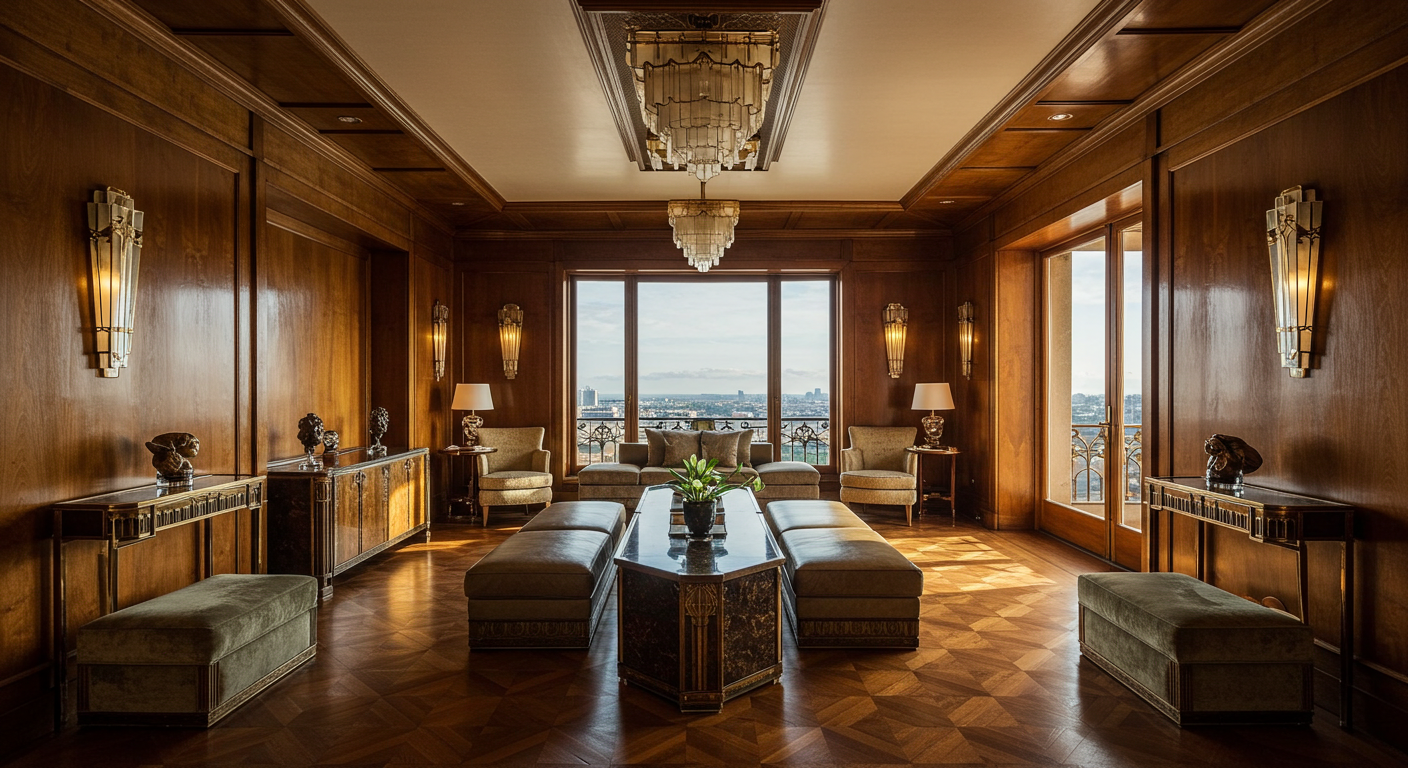1. Embrace Bold Geometric Shapes
Art Deco is famous for its strong geometric patterns. Think zigzags, chevrons, and sunburst designs. These shapes can be incorporated into various elements of your home:
- Furniture: Look for pieces with streamlined, symmetrical forms. For example, a coffee table with a trapezoidal base or a mirror featuring a sunburst frame can make a striking statement.
- Textiles: Incorporate rugs, cushions, or curtains with bold geometric patterns to add visual interest and tie the room together.
- Walls: Consider wallpaper with repeating geometric motifs to create a focal point in the room.
These elements not only add visual interest but also create a sense of order and symmetry, which are hallmarks of Art Deco design.

2. Incorporate Luxurious Materials
Luxury is at the heart of Art Deco. To achieve this opulent look, focus on high-end materials:
- Metals: Use brass, chrome, and stainless steel in light fixtures, furniture accents, and decorative items. These materials add a sleek and shiny appeal.
- Glass and Mirrors: Incorporate glass-top tables or mirrored surfaces to enhance the sense of space and reflect light beautifully.
- Exotic Woods: Furniture made from ebony, mahogany, or zebrawood adds richness and depth to the décor.
- Fabrics: Opt for plush materials like velvet and silk for upholstery and drapery to add softness and luxury.
These materials not only add a touch of opulence but also reflect the modernity that Art Deco embodies.
3. Opt for a Bold Color Palette
Art Deco interiors often feature rich and vibrant colors:
- Jewel Tones: Deep greens, blues, reds, and purples can be used on walls, furniture, or accessories to create a dramatic effect.
- Neutrals: Balance these bold colors with neutral shades like beige, cream, or gray to prevent the space from feeling overwhelming.
- Metallic Accents: Incorporate gold or silver accents through decorative items or hardware to add a touch of glamour.
This combination of colors creates a dynamic and sophisticated atmosphere, characteristic of Art Deco design.
4. Focus on Statement Lighting
Lighting in Art Deco is not just functional but also serves as a decorative element:
- Chandeliers and Sconces: Look for fixtures with geometric designs, often made from chrome or brass, featuring frosted or etched glass.
- Lamps: Table and floor lamps with sleek lines and bold shapes can serve as focal points in a room.
- Layered Lighting: Combine ambient, task, and accent lighting to create a warm and inviting atmosphere.
Proper lighting enhances the luxurious feel of the space and highlights other design elements effectively.

5. Add Decorative Motifs and Artwork
Art Deco is known for its distinctive decorative motifs:
- Sunbursts and Fans: Incorporate these patterns in wall art, mirrors, or textiles to add visual interest.
- Stylized Figures and Animals: Look for sculptures or artwork featuring stylized human figures or exotic animals to add character to your space.
- Inlays and Marquetry: Furniture with intricate inlays or marquetry work showcases the craftsmanship associated with Art Deco.
These decorative elements add personality and a sense of history to your interior.
6. Maintain Symmetry and Balance
Achieving balance is key in Art Deco design:
- Furniture Arrangement: Place furniture in a symmetrical layout to create a harmonious look.
- Matching Pairs: Use pairs of chairs, lamps, or side tables to reinforce symmetry.
- Consistent Themes: Ensure that colors, materials, and motifs are consistently used throughout the space to create a cohesive design.
This approach creates a sense of order and elegance, essential to Art Deco interiors.
By incorporating these six concepts, you can transform your urban living space into a refined Art Deco haven. Remember, it’s all about bold designs, luxurious materials, and a harmonious balance that exudes sophistication and glamour. Happy decorating!

